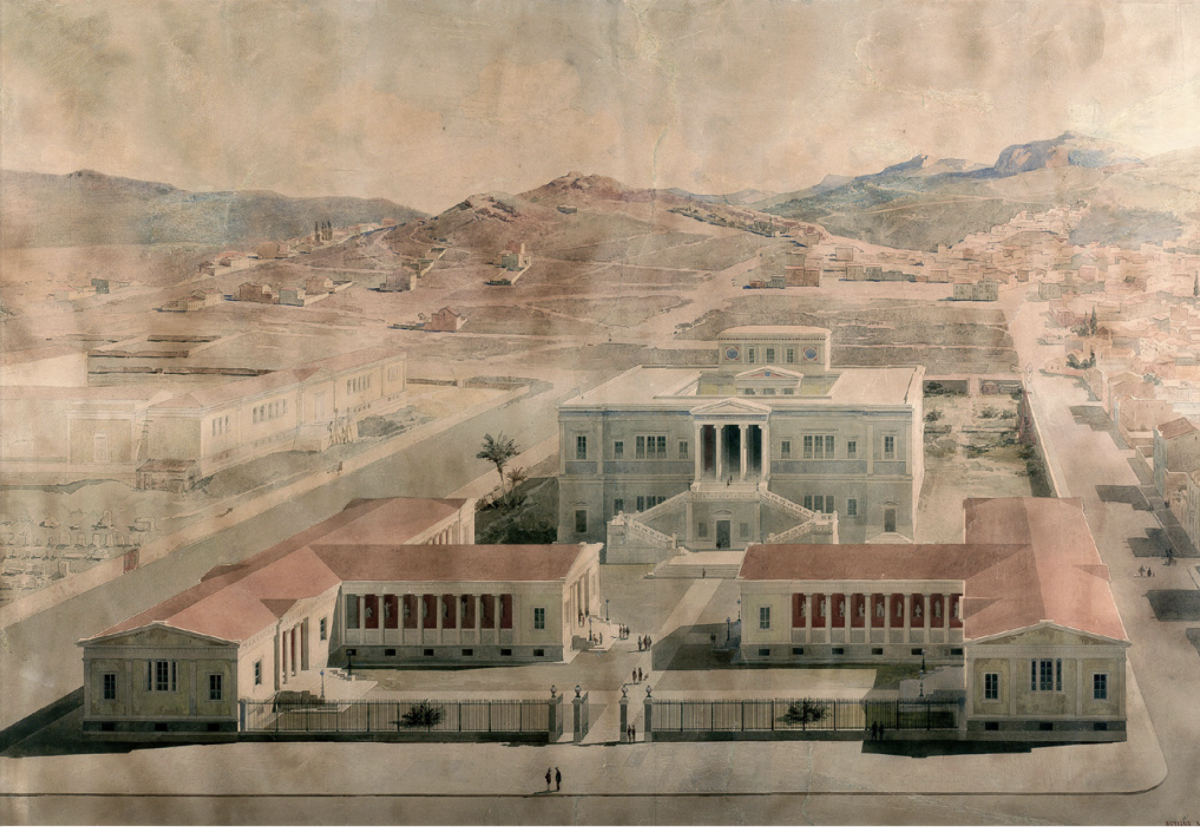Why Athens?
REDEFINING THE CANON
From Pausanias to Evliya Çelebi, and from the Grand Tourists of the 18th and 19th century to the gathering of some of the most renowned modern architects as delegates of the 4th CIAM in 1933, numerous important architects, artists, and other intellectuals have visited Athens for different purposes: to see, measure and admire its ancient monuments, to reformulate the relationship between antiquity and modernity, or even to project modernity onto local vernaculars. Many more (such as Winckelmann) never visited the city, but used the idea of classical Athens in order to change the way we see art and architecture. Throughout the centuries Athens has offered the incentive both to establish and to subvert the canon of architecture and its history. And it continues to do so: over the last few years, the study of its Ottoman history and its indigenous archaeologies have gained momentum among architectural historians. At the same time, the profusion of the anonymous DomIno-like “polykatoikia” (apartment building), in the city that lent its name to the famous “Athens Charter”, attracts researchers and student groups from all over Europe and beyond.
Emerging from a decade of financial, humanitarian and environmental crises, Athens is now more relevant than ever: while a number of ambitious masterplans promise to revitalize the city center and coastal front attracting potential investors and foreign residents, other initiatives try to counter uncontrolled development pointing to questions of sustainability, affordability, participation and community building. Meanwhile, the city’s past is under constant renegotiation: 2021 marked the bicentennial of the Greek Revolution and the subsequent foundation of the modern Greek nation-state. 2022 marked the centennial of the end of the Greco-Turkish War and the massive Population Exchange (involving Christian and Muslim populations) sanctioned by the Treaty of Lausanne (1923). Both events were fundamental for the political, demographic, cultural and architectural evolution of Athens; the current timing calls for a revision of past historiographies, and a reappreciation of the complexity of the Athenian context, from the Ottoman entanglements of ancient sites, to modern housing projects prompted by the arrival of refugees from Asia Minor.
Debated restoration programs of the city’s antiquities, publications that explore the city’s Medieval, Ottoman, inter- and post-war past, campaigns for the protection of its modern monuments (docomomo Greece, TICCIH Greece, Monumenta etc.), initiatives concerning the gender dimension of local architecture and collective acts for the ‘decolonization’ of monuments are just some of the many initiatives that unearth the city’s different pasts, histories and architectures. We believe that Athens is an ideal location for EAHN 2024 and we invite our colleagues to develop new perspectives on the multiple historical and architectural layers of the city.
The longue durée of Athens: between history and utopia
Spreading and breathing daily under the shadow of the Acropolis, the capital of Greece owes much of its current size and administrative status to the lure of its past. Despite the classical grandeur of the monuments that continuously interrupt its modern urban fabric, Athens did not always retain a central role in the life of the country. During the Byzantine and Ottoman eras, Athens grew smaller both in demographics and political importance, while its classical ruins were being dilapidated, looted, or repurposed as spolia for the construction of vernacular habitations, churches and mosques. Much like Petrarch’s Rome, however, Athens was carried through the centuries of its occupation as a utopian literary topos, only to ‘rise again’ in the wake of the Greek Revolution as the permanent capital of the liberated nation-state. Re-discovered in the 18th century by architects, such as James Stuart, Nicholas Revett and Julien-David Le Roy, who set off to read on the form of its surviving monuments the rules of the art, and rebuilt from 1834 onwards on the basis of these same rules, modern Athens rose on the literal and metaphorical foundations of its classical past. Almost two hundred years later, the archaeological attraction of the city merges with the layers of a roaring metropolis.
With a history spanning more than two millennia, contemporary Athens is an amalgam of multiple architectural histories that offer fruitful ground for reflection and study to architectural historians of all eras and areas of expertise. From its classical, Byzantine, Medieval and Ottoman heritage, all the way to its reconstruction in the nineteenth century, and from its rapid expansion in the twentieth century to its current metropolitan status, the city comprises a complex stratigraphy where layers of history overlap, coexist, or compete for attention and cultural signification. Receiving successive waves of migration in the 20th century, the city expanded and incorporated surrounding villages and towns, being currently home to one third of Greece’s population. A contact zone (and often a battle-ground) between East and West, between the Balkans and the Mediterranean, Athens has been the meeting point and melting pot of different cultures and architecture, the place of discovery, reinvention and fantasy for numerous travelers; at times ideal, but very often surprisingly real.
Today Athens is still being built, designed and re-shaped through projects that envision the future and often conflict with its different pasts: such projects include Renzo Piano’s new Cultural Center in Faliron, and Norman Foster’s plans for the former airport of Hellenikon, as well as lesser known, but historically pertinent projects, as the recent conversion of the former Doxiadis Associates headquarters into a luxury condominium, the transformation of architect Takis Zenetos’ FIX factory into a museum of contemporary art, the completion of Ioannis Despotopoulos’ Athens Conservatory, and the re-opening of the National Gallery following years of an eventful expansion and restoration work. From their mere material substance, to their architectural form and public rhetoric, such new projects claim and use different aspects of the city’s past and envision different futures.
The organising committee

